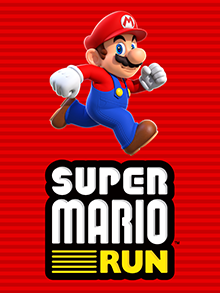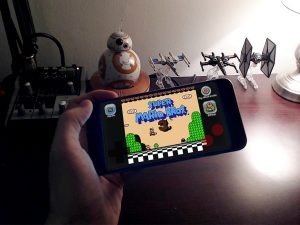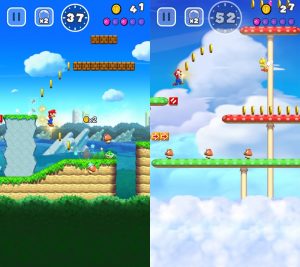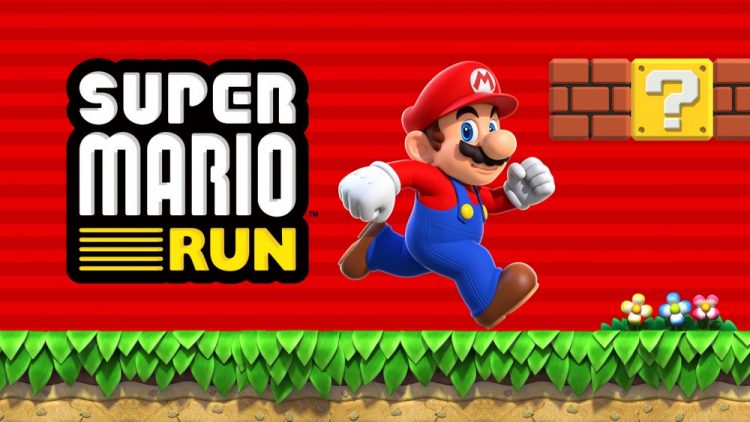After spending three weeks with Super Mario Run, I feel confident in recommending it with the caveat that you temper your expectations. This game has been both praised and panned all across the internet, and I think what it comes down to is understanding and accepting it for what it actually is: Super Mario Run is a good mobile game featuring Mario, but not a mobile version of a good Mario game. With the emphasis on ‘good’ mobile game and not ‘great’, since it’s light on replay value. As a whole new batch of gamers await its imminent release for Android, let’s take a look at Nintendo’s second mobile outing and how it holds up almost a month later.
 Game Name: Super Mario Run
Game Name: Super Mario Run
Platform(s): iOS, Android
Publisher(s): Nintendo
Developer(s): Nintendo
Release Date: iOS – December 15, 2016, Android – Q1 2017
Price: Free / $9.99
It’s important to make the distinction between a mobile title and a mobile version of a Mario game because that’s where one of the first misconceptions about Super Mario Run is rooted. A number of negative reviews of the game make it clear that many people thought this was going to be similar to existing Mario games, and it probably didn’t help that so much of the internet chose to pair coverage of the news with mockup imagery depicting existing Mario games on phones and tablets. Nintendo and DeNA announced their partnership in March of 2015, along with their intention to develop mobile titles and an online membership service to replace Club Nintendo. In an official statement, DeNA said:
To ensure the quality of game experience that consumers expect from this alliance of Nintendo and DeNA, only new original games optimized for smart device functionality will be created, rather than porting games created specifically for the Wii U home console or the Nintendo 3DS portable system.
In order to create completely new game experiences for smart devices, all Nintendo IP will be eligible for development and exploration by the alliance.

My interpretation of “new original games optimized for smart device functionality” was that the company would produce popular-genre mobile games that star Nintendo characters. The top mobile titles are largely casual games; they’re suited to short play sessions in order to be viable on devices where players are usually multitasking and utilize simplified tap/swipe-based input designed to work with touchscreens. Traditional platformers like Super Mario Bros. aren’t generally casual games. They require precise timing and responsive controls, which a touchscreen is so bad at delivering that it prompted researchers at Aalto University in Finland to write a paper. DeNA specified that there would be no ports and that games would be developed from the ground-up and optimized for smart device functionality, which disqualified the idea of developing a new traditional platformer with controls that would have most likely narrowed its appeal.
The solution for platformer games on mobile devices was a mutation of the genre dubbed the ‘runner’ (also ‘auto runner’, ‘infinite runner’, and ‘endless runner’). The basic concept is the same, but the controls are simplified; a character automatically runs along a path while the player must tap and swipe to make them dodge obstacles, pick up items, and defeat enemies. This is the core gameplay of Super Mario Run.
Gameplay

Mario automatically runs to the right, and your only input methods are tapping to jump and swiping left to make Mario slow down slightly when he’s airborne. Various moves can be performed based on the context of a jump, which adds some good complexity but requires precision – and sometimes just luck – to pull off. Tapping while airborne will make Mario do a spin that extends the distance of his jump a little. You can do a ‘spin strike’ that sends him spiraling skyward if you jump again while above an enemy, which takes some practice because you can trigger it much higher in the air than a normal stomp. Mario will roll when landing from a high jump, and tapping as you land will make him do a somersault, with both moves capable of taking out enemies. He’ll also grab ledges if you jump against them, and can flip forward over them if you tap. Mario can also wall jump, and will do so if you tap too early on an attempted ledge grab, sending you off in the other direction. When you get the moves right and things work, it’s actually pretty fun, but there’s also plenty of frustration to be had when you your taps somehow invoke the wrong actions.
There’s a bubble you can activate around Mario that will protect him from damage and slowly drift him backwards through the level, which is useful if you missed something, need to take a different approach to an obstacle, or just need to save yourself from taking damage (the button for this is at the top of the screen, however, which is inconvenient if your thumb isn’t six inches long). Bubbles automatically activate when Mario dies; you start a stage with two and can find more in question mark blocks, but if you’re hit without any left it’ll mean having to start the stage over. You can unlock five other characters to swap out for Mario, each of which have different special abilities; Luigi jumps the highest, Princess Peach has a floating jump, Yoshi has a flutter jump, and Toad and Toadette run the fastest. You might find some of these characters to be easier to use for certain coin challenges or stages in Toad Rally, but I didn’t really favor any single one of them. Mario and Luigi are the only two who have super forms from picking up mushrooms, which means that they can also take one additional hit before dying while the others cannot.
In all, it plays like a mobile runner game with Mario elements, and for that, it does a pretty good job of capturing the feel a Mario game – even if it isn’t one. You only get 60 seconds per stage, which meets that quick play session requirement for mobile gaming. As Miyamoto himself declared, the game can be played with one hand, satisfying the need for simple controls in a mobile game. Since it is running on a device that isn’t a dedicated handheld, you are at the mercy of anything else that happens on your phone, be it texts or other notifications. I actually had not updated iOS on my phone for some time, and the game would randomly get very choppy every couple of minutes. It cleared up after I ran the update, but these are the kinds of things that are beyond Nintendo’s control and entirely a product of the mobile platform.
Graphics

Super Mario Run is styled after the New Super Mario Bros. console games, using sprites of art and models straight from those titles. Stages are side-scrolling, and boast all the standard trimmings of a Mushroom Kingdom obstacle course: brick and question mark blocks, mushrooms, stars, coins, bottomless pits, springboards, pipes, spikes, fireballs, a host of enemies, and usually a flagpole marking the goal. The environments take after those established throughout the main series; colorful grassy hillsides lead to deserts, there are courses across giant mushroom caps and through underground caves, airships and castles wait at the end of worlds, and there are even ghost houses (but no underwater levels, thankfully). The Kingdom Builder mode features new art assets, but they all adhere to the same art style as the rest of the game. Of note is that the game offers settings for graphics and rendering, and changing these from High to Low will reduce the detail and framerate, respectively. Their purpose is to lower the amount of energy and used by the app, much like the Power Saving option in Miitomo.
Sound
The soundtrack largely remixes music from the New Super Mario Bros. series, which isn’t a bad thing by any stretch. Slightly different arrangements of familiar melodies combine with effects straight out of the console titles, and it all sounds great together – if you ever hear it. A lot of people play mobile games muted, but if you turn the sound on, it’s every bit as good its console cousins.
Value

Three loosely-integrated game modes make up Super Mario Run: Tour, Toad Rally, and Kingdom Builder. While these are supposed to work together to encourage continued play, Toad Rally ends up becoming the main thing left to do after a while. The Tour mode gives you access to 24 of those side-scrolling runner stages, each of which have three variations for special colored coin collecting challenges. There are six worlds, consisting of four stages each, that culminate in a showdown with Bowser to once again rescue Princess Peach. You can only play the first three stages of World 1 in the free version of the game, and the other 21 stages become available for you to play whenever you want, as many times as you like, if you unlock the full game for $9.99. Coins you collect in Tour and Toad Rally stages are banked for use in the Kingdom Builder mode, and you earn Rally Tickets and new stages to play in the Toad Rally mode for every world you complete in the Tour mode.
Toad Rally pits you against the ghost of another player’s run in a handful of Tour mode stages, at the cost of one Rally Ticket per play. Winning a rally hinges on outscoring the other player by picking up coins and doing ‘flashy moves’ (the flips and spins I detailed earlier) to impress Toads that appear at the bottom of the screen to cheer you on, so you need to be doing those constantly. While you play through some of the stages from Tour (including their variations for the colored coin challenges), they’re altered to loop endlessly instead of leading to a flagpole.

A lot of the challenge in this mode unfortunately comes from the game trying its hardest to make you lose track of Mario, which only becomes slightly less annoying the more you play. Your opponent’s ghost appears as a semi-transparent cutout of their character that moves along the path recorded during their playthrough, which means that it’ll usually be right on top of you unless you or they fall behind. This creates what I’ve dubbed the ‘little sister waving her hands in front of the TV while you’re trying to play’ effect, and will often succeed in causing you to follow the wrong character. Stomping enemies creates big clouds and glowing impact effects, touching coins creates glowing sparkle effects, and dust clouds are generated under Mario during rolls and landings, all of which becomes difficult to see through when it’s happening simultaneously. Executing flashy moves leaves a thumbs up icon on the screen where the move occurred, meanwhile they and other non-flashy actions generate star bits that fly directly off of Mario to fill a secondary meter at the top of the screen. This will frequently distract you during a jump, and when that meter is full it activates a Coin Rush mode that makes coins randomly burst out of the sky and parts of the environment while Mario runs slightly faster. This completely changes the timing for jumps, and in some cases forces you to skip over bits of a course. The game also pauses everything for a second when Coin Rush begins, when you take damage, and if you die (you have infinite bubbles), which will further disrupt your timing. Taking damage also stops Mario’s momentum and forces him to slowly build back up speed, meaning that you’ll drop straight down into any pit you’re over when you get hit.

A number of differently-colored Toads will move into your kingdom if you win a Toad Rally, and leave if you lose. The colors of the Toads are tied to which stages you play (the desert stage will give you red and yellow Toads, while the ghost house stage will give you red and purple Toads, and so on). This brings us to The Kingdom Builder mode, which is a bit of an oddity. It’s a watered-down ‘base builder’ (another popular mobile genre), and tasks you with rebuilding the Mushroom Kingdom after Bowser trashed it when he kidnapped Peach. You can use the coins you’ve collected in the other two modes to buy buildings, structures, and all manner of shrubbery and decorative plants to place around a map… and there’s not much more to it than that. Your kingdom’s overall level increases as more Toads move in, allowing you to buy more advanced buildings, some of which also require that you have so many of a specific color of Toad before they become available for purchase. There are a few special houses that unlock some of the other playable characters, but the most useful function of your kingdom comes from four question mark blocks and two Bonus Game Houses that eventually become available. These can give you coins or Toad Rally tickets once they’re placed on your map, and have an eight hour cooldown period between uses. Once you’ve completed Tour and are no longer getting Rally Tickets from it, this becomes your main source for them.

After you’ve completed all of the stages and coin challenges in Tour Mode, it’s only good for recording new ghosts, playing through the stages that don’t show up in Toad Rally, or if you really just want a solo run without a Rally ghost. Kingdom Builder gives you little incentive to really invest in it once you’ve placed the buildings that give you Rally Tickets and coins; there will still be plenty of things left to buy that require more Toads, but it’s just unnecessary since they have no functionality. You’ll skip it unless you’re really into decorating the kingdom, or are the kind of completionist that must own one of everything in the shop. That leaves Toad Rally, with its only appeal being that it can be good to pull out every once in awhile if you just need to kill some time. While that is what mobile gaming is primarily about, there’s usually a hook of some sort, some goal or bonus for doing so, which is just missing here.
Kingdom Builder should have given you some regular task to perform for which you’d need to play at least one Rally a day, but instead they chose to rely on the prospect of decorating your kingdom to be enough to keep players coming back. It’s almost as if Nintendo started out planning to include freemium elements (items you either need to work to acquire in-game or use real money to buy) in Super Mario Run, but changed their mind halfway into it and just set a flat fee for the full game instead. Rally Tickets should have been a more rare commodity since you need them to play the Rally Mode, which in turn you need to maintain your kingdom, but they are instead so plentiful that they seem pointless. This was likely done to balance out the lack of an option to buy them and account for the Kingdom Builder mode failing to provide any real goals to make them desirable. During my longest single play session, which was an hour and a half, I used a little over 70 tickets on back to back Rally runs; one tap of the large question mark block in my kingdom gave me 30 back, with another 10 coming from the smaller blocks.
At three weeks post-launch, I’ve maxed out my kingdom’s population at 9,999 Toads, acquired all of the special buildings, unlocked all of the secrets, and have never run out of Rally Tickets. I do still launch the game from time to time to run a Rally when I need a brief distraction, which is all it’s good for now without anything else left to do in the game. Granted, I did dedicate a lot of time to it, so more casual gamers will be playing for much longer before they reach this point. That just reinforces the fact that this is a mobile game and not a Mario game.
I’ve enjoyed my time with Super Mario Run; I don’t regret the purchase and feel like I got $10 worth of fun out of it. Hopefully, Nintendo will add something more to it in order to make it worth coming back to on a more regular basis, but even if that never happens, it’s worth checking out. The levels in the free demo are more than enough to base a purchase decision on – just don’t go into it expecting it to somehow not be a mobile game.
Super Mario Run
Summary
Super Mario Run is not a Mario game per-se, but a mobile game starring Mario. It’s a runner with an odd, half-baked base builder baked in, and doesn’t give you any ongoing goals or tasks to pursue once all of the challenges have been completed. It still provides decent gameplay and makes for a fine time killer, which is the reason most people launch a game on their phone. Whether or not you’ll want to drop $9.99 on it will depend entirely on how much you enjoy the three free levels the game offers, as those give you a really good taste of what you’ll get from the full game. If you don’t come into it looking for a true Mario game, there’s plenty of enjoyment to be had.
-
It looks and sounds like Mario, but plays like a mobile game.


